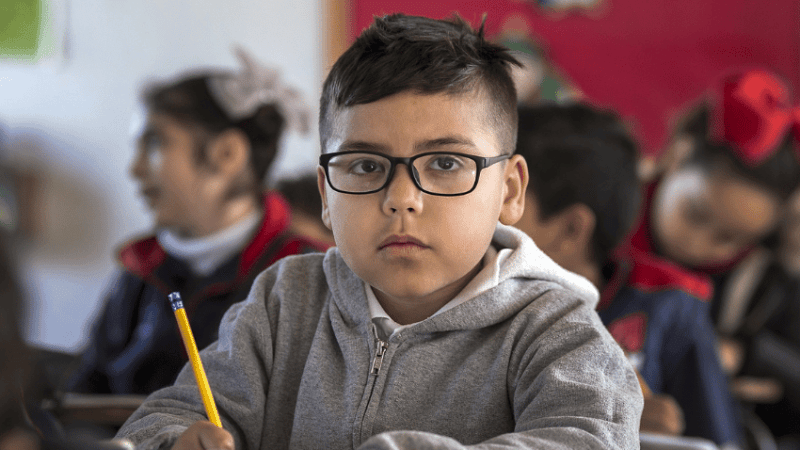Engage SEND Students In Literacy Lessons With Multisensory Storytelling

This is particularly useful if you are working with children in developing an understanding of new experiences

- by Kate Bradley

Encouraging a child with special educational needs and disabilities to make use of all of their senses has proved a successful way for me to engage them in literacy lessons and foster a love of reading.
I utilise the five classic senses (sound, touch, sight, taste, smell) as well as two important but lesser known ones: vestibular and proprioception. The former is the sense of balance and spatial coordination, while the latter is the position of the body and an awareness of the movements that it makes.
When starting a new topic with the children I identify a key text in order to support learning both in English lessons and across the curriculum. Y4’s topic is the Romans. There are some brilliant stories from this period, many of which have been passed down through thousands of years of storytelling.
Last year, with a SEND class of mixed ages (5-9) and abilities (from P5 to working towards NC KS1), I chose the story of Romulus and Remus – the founders of Rome. The basic premise of the story is that a vestal virgin, Rhea, gets pregnant by the god Mars. Rhea’s father was angry that this had happened, locked her away and commanded servants to kill the twin baby boys.
The servants couldn’t do this and put them in a basket and sent them down the river. A wolf found the babies and fed them milk, taking them to a local shepherd and his wife. The shepherd bought the boys up as his own and named them Romulus and Remus. When they were grown men, they wanted to build a city to thank the shepherd and his wife, but had an argument over what to call it. Romulus hit Remus with a stone and he died. Romulus named the city after himself, Rome, and became its first king.
For many children, this simplified retelling of the story is understandable, but for a Y4 child working below national curriculum levels it needs adapting to meet their needs. One way of doing this is to add sensory elements and look at the story structure.
The first part of creating a story for a wide audience is to ensure that the language is accessible. I looked at each page of the book, shortened it in half, then down to a sentence, then down to two or three key words.
An example for the story of Romulus and Remus would be:
- Twin babies were born
- They were sent away down the river
- A wolf found them and took them to the shepherd
- The shepherd and his wife called them Romulus and Remus
- Romulus and Remus grew up and built a city
- They argued and Romulus killed Remus
- The new city was called Rome and Romulus was king
Then trim those sentences to two or three words:
- Twin babies
- In river
- Found by wolf
- Given to shepherd
- Called Romulus and Remus
- Grew up
- Built city
- Argued
- Remus died
- Romulus was king of Rome
Once you have a simplified story, the next task is to identify sensory elements that will support the children in exploring and remembering key components. I often use PowerPoint as my starting point, adding pictures, sounds and keywords and playing it either on the whiteboard for the whole class, or an iPad if it is a smaller number of children.
If it is just for one child, give them headphones so the noise doesn’t distract others. I find that 15-20 minutes is optimum, and covering the story in five to seven sections has the most impact. Below are some examples for adding sensory elements to the story.
| Story element | Auditory | Tactile |
|---|---|---|
| Twin babies | Crying | Baby hat |
| In river | Running water | Water spray bottle |
| Found by wolf | Howling | Fur |
| Given to shepherd | Countryside | Warm hot water bottle |
| Grew up | Chatting/laughing | Stretchy men |
| Built city | Construction site | Sand and stones |
| Romulus king of Rome | Fanfare | Jewellery |
There are different ways that you can provide the children with tactile experiences. You could all sit in a circle and, as the story moves on, give each child a small amount of the item. Alternatively, place each item in a bowl and encourage the children to move around the room and negotiate space. If you are in a small room, put all the items in a canvas bag and present them to the child one at a time. Find what works with the children you teach and the space you have available.
When including sounds, be mindful of the feeling that they create. It is often useful to start and end with calming music and sounds, building up to a more rapid pace before bring it back down again. With the outline above, you can see that it ends with a fanfare, in order to ensure the children are calm at the end of the session. I also put on calming music while we pack up.
This is an example of just one of the strategies that I use to create multi-sensory stories. What you do will very much depend upon the level of your children, the group size and your intended outcomes.
Story ideas
- Books that are great for a whole-class sensory story and have worked well for me include Port Side Pirates! by Oscar Seaworthy and The Smartest Giant In Town by Julia Donaldson.
- For one-to-one or small group explorations, try a popular folk tale such as The Little Red Hen.
- Create your own story based on your class topic, such as ‘all about me’, ‘people who help us’ or Christmas. This is particularly useful if you are working with children in developing an understanding of new experiences, such as going into hospital for an operation.
Consider the components of that experience, such as ‘pack bag, get taxi, meet nurse, new bed, favourite toy, medicine, go home.’ Find matching images (ideally these would be of the setting, or as close as you can make it) then create your PowerPoint, adding sounds where possible. Tactile elements could include a large bag with clothes, toy cars, blue fabric, pillows and blankets, teddy bears, water and syringe and putting a coat on.










